Flying Scotsman: Video, pictures and the full story of how the nation's favourite locomotive returned home to Yorkshire
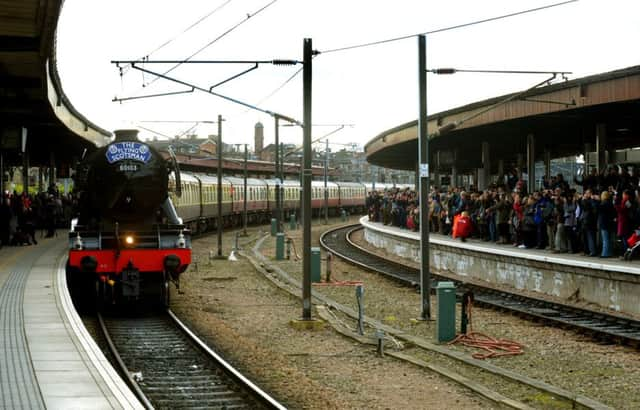

The world’s most famous steam locomotive left London King’s Cross for York crammed with specially-invited guests as it returned to the tracks for the first time in more than a decade following a long-awaited £4.2m restoration.
Among those on board the Yorkshire-built engine was 83 year-old Ron Kennedy, a former Flying Scotsman driver during the 1950s and early 60s.
Advertisement
Hide AdAdvertisement
Hide Ad“I began as a cleaner in 1947 and started driving the engine in 1958,” he said. Mr Kennedy admitted he never thought he would travel on the ‘old girl’ again. “I didn’t think I would see this day, it’s a dream come true for me,” he said.
“When people think about steam engines they think about Flying Scotsman, it’s something that older generations remember and they want their children and grandchildren to remember - it’s what made the railways great in this country.”
As the locomotive headed north, reaching speeds of 75mph, the crowds grew in number, waving and cheering in a manner normally reserved for royalty. On a couple of occasions, though, the train had to be halted when a few over-enthusiastic people strayed too close to the tracks, which put the arrival time in York back by more than 40 minutes.
Some of those on board, like 13 year-old Zak Parlby, had never travelled on Flying Scotsman before. Zak, from Staithes, in North Yorkshire, was among the guests along with his grandfather.
Advertisement
Hide AdAdvertisement
Hide AdZak became interested in Flying Scotsman after being taken to see the locomotive when it was in York. He did a sponsored swim hoping to raise £10 towards the restoration, but ended up raising £600.
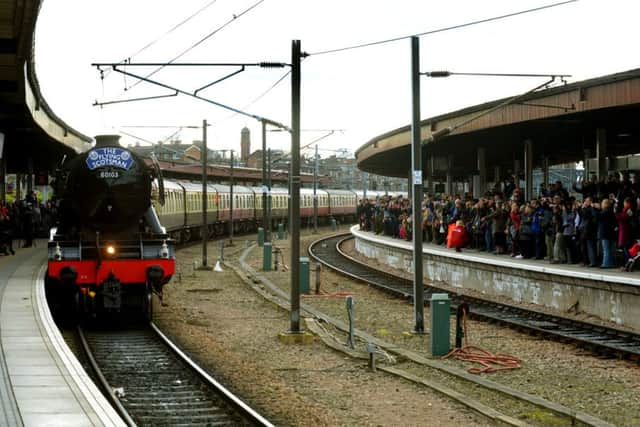

Some of those on board had connections to lesser known chapter’s in the train’s illustrious story. Tania Hopkinson, from Cornwall, worked on Flying Scotsman when it toured the United States in 1969.
Mrs Hopkinson, who was 21 at the time, was one of 10 “Tartan girls” who helped promote the locomotive stateside. “We wore these Tartan miniskirts, and they really were ‘mini’,” she said.
She spent six weeks travelling from Boston to Houston. “It was our job to sell souvenirs, books, posters and things like that because we were there to promote Britain and the Flying Scotsman.”
Advertisement
Hide AdAdvertisement
Hide AdIt was a memorable experience for those involved. “Huge crowds came to see us because they’d never seen anything like it before. It was incredible and to be back on board again today has put a lump in my throat.”
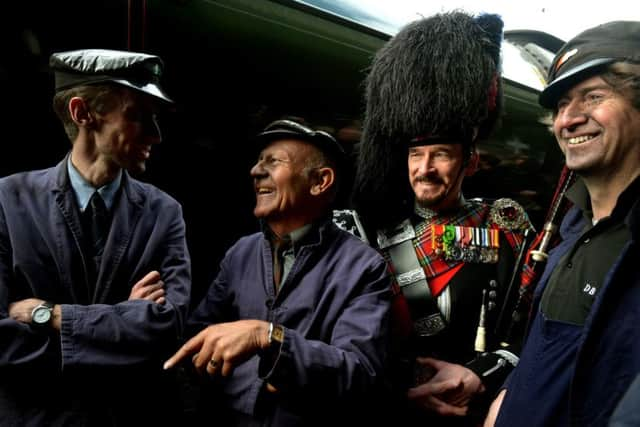

David Court, from Doncaster, was another of the passengers. His love affair with the steam locomotive began in 1963. He made his way up to become fireman working in tandem with the driver.
“You had to work as a team. It wasn’t just a case of throwing coal into the firebox you had to know where to put it otherwise it wouldn’t steam,” he said.
It was hot and dirty work. “You had 3,000 degrees of heat coming at you and if you put your arm in the wrong place you would get burned.”
Advertisement
Hide AdAdvertisement
Hide AdDespite this he never lost affection for the Flying Scotsman and he drove the famous locomotive when it journeyed from King’s Cross to York following an earlier restoration in 1999.
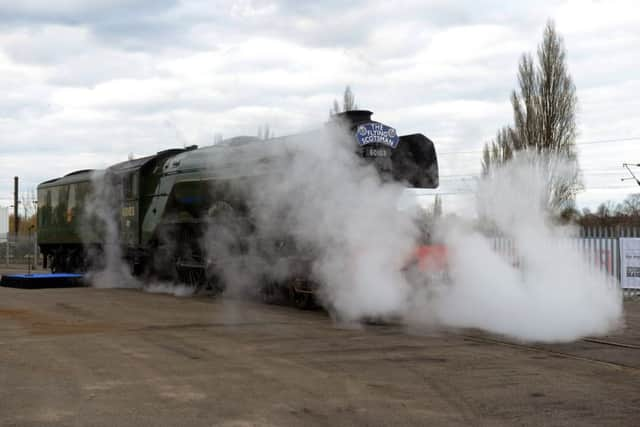

“Back then I was on the footplate and this time I get to see what it’s like as a passenger, and it’s fantastic,” he said.
The modern day Flying Scotsman, run by Virgin Trains, takes four hours to travel from London to Edinburgh, whereas yesterday’s journey to York on the original locomotive took around five-and-a-half hours.
But as the famous green livery finally appeared at York station amid a sea of smiling faces waiting on the platforms, the overwhelming feeling was one of pride as a piece of heritage returned home to Yorkshire.
You wait ten years for a train, then two come at once...
Advertisement
Hide AdAdvertisement
Hide AdTrain spotter Ryan Allen, from Spilsby, Lincolnshire, waited trackside for a glimpse of the Scotsman - but just as it came into view it was “photobombed” by a Virgin East Coast train coming the other way. He tweeted: “I had a feeling this would happen.”
Virgin Trains saw his tweet and offered him a flight to Atlanta, Georgia, by way of “apology”.
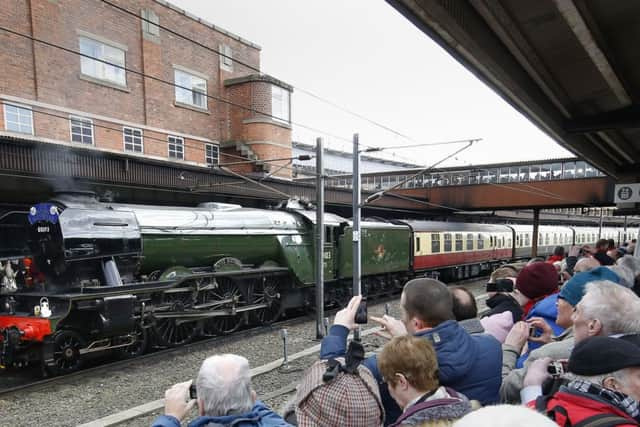

Speaking to the Yorkshire Post on Friday, Mr Allen, who is originally from Doncaster, where the Flying Scotsman was built, said he only posted the video on Twitter after getting a great reaction when he sent it to friends.
He was working at a disused station in the village of Little Bytham when the train was due to go past. When he arrived, he saw queues of photographers waiting for the Flying Scotsman, which was running later, and he decided to wait to catch a glimpse.
Advertisement
Hide AdAdvertisement
Hide AdMr Allen, a leakage technician for Anglian Water, said: “It was just luck really that I was in the right place at the right time - although the video didn’t go as planned.”
Mr Allen, 34, plans to take the trip to Atlanta with his partner.
End of a ten year wait
The locomotive, which was built in Doncaster in 1923, found global fame in 1934 when it became the first steam engine in Britain to be officially timed travelling at more than 100mph. Last year, it topped a poll of the world’s best-known trains and locomotives after a global survey by YouGov, where people in four continents were asked to name five trains or engines.
But its restoration has been mired in controversy and blighted by delays, and a specialist firm was called in after managers at the National Railway Museum in York admitted their in-house team was not equipped to carry out the vital repairs. The cost of the painstaking project escalated to £4.2m - nearly double the initial estimate.